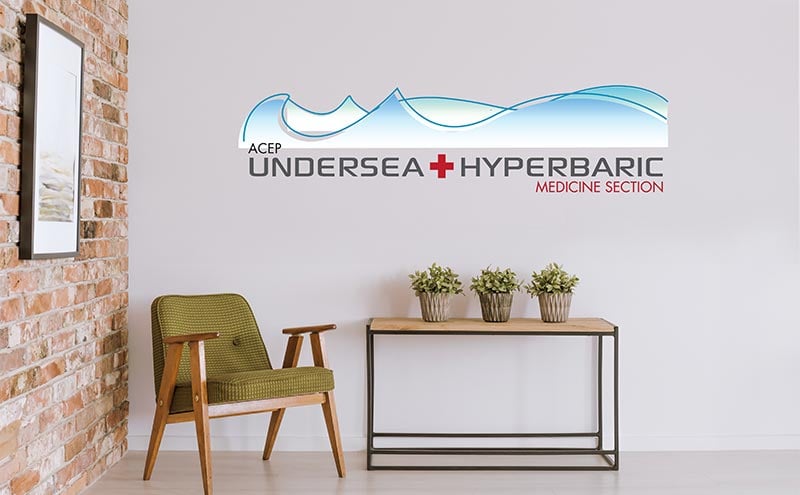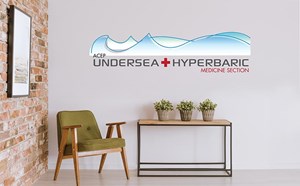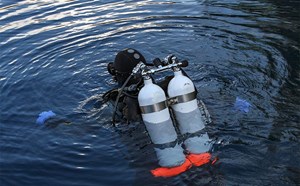
A Letter from the Chair
It seems like the American College of Emergency Physicians’ (ACEP) annual Scientific Assembly (SA) and the celebration of the 50th Anniversary of ACEP were just yesterday. Both SA and our Undersea and Hyperbaric Medicine (UHM) Section meeting had a great turnout. There was high interest within the section from our regional members and international members, as well. What I have observed over my first year as president is that the ACEP SA and our UHM Section meeting are great ways to reconnect with members you already know (and are a permanent presence at our section meetings), as well as to welcome and introduce new member and attendees. Some of these new members and visitors may be attending the section meetings because of a sparked interest or curiosity about the field of undersea and hyperbaric medicine. It is encouraging to see both the familiar and new faces at the UHM Section meeting this last year!
As we saw in 2018, there has been added coverage of our field in the news. Given the Thai boys soccer team rescue from the Tham Luang Nang Non Cave in Chiang Rai Province of Thailand in June/July 2018, our specialty was in the forefront of current events and ended up as the lead story of news outlets across the globe. At this last year’s section meeting, Dr. Richard Walker, III, presented an excellent lecture on the dive rescue operation while highlighting the intricacies, challenges and difficulties inherent with undertaking such a heroic effort. The methodical staged approach to rescue, adaptation of skills from the field of cave and technical diving, along with the utilization of ketamine and full-face masks, resulted in a phenomenal outcome of the successful rescue of the entire team. I suspect this incident, albeit morbid to contemplate such a thought, may not be the last of its kind. It certainly will not be the only time our specialty is thrust to the forefront of news or to the cutting edge of integration into various emergent situations around the world and in space. As humans explore the unknown in the depths of the ocean, uncharted terrain of Earth, as well as space and beyond our own planet, I can almost guarantee our specialty will be one that will be consulted and asked to assist with decision-making in these austere environments. The least I can say is, stay tuned…
Additionally, on the clinical front, I wanted to highlight a very important guideline that was presented in the last year by Paquette, et al1 as an approved clinical practice guideline (CPG) for the American Society of Colon and Rectal Surgeons for the treatment of chronic radiation proctitis (CRP). We know that radiation therapy is frequently used in many types of cancer, including anal, cervical, prostate and rectal cancers, and it can cause collateral damage and result in the development and progression of a chronic hemorrhagic radiation proctitis. Symptoms can include hematochezia, tenesmus, mucus discharge, and even fecal incontinence. Because up to 30% of patients treated with radiation therapy for the aforementioned cancers may develop this complication, it is a population that both hyperbaric physicians and colorectal surgeons, alike, are looking to manage more effectively. These patients can present to the emergency room, urgent care or clinical offices with symptoms. The CPG, put forth this last year by our surgical colleagues, highlights hyperbaric oxygen therapy as an effective treatment modality for chronic radiation proctitis and its symptoms and complications. After review of the current literature, the CPG revealed a “strong recommendation based on moderate-quality evidence” which translates to support of hyperbaric oxygen therapy as a level 1B recommendation. This corroboration of effective treatment of CRP is very encouraging and highlights the importance of corroboration of findings with evidence-based literature reviews across different specialties in medicine. I suspect there will be more CPGs to come from various other specialties that will incorporate treatment indications that we already encounter on a daily basis.
With that, I wanted to say thank you to all who attended the ACEP Scientific Assembly this year and for our leadership for the ACEP UHM Section. We hope you enjoy this semi-annual newsletter, and we look forward to seeing you again soon at next year’s meeting Scientific Assembly in Denver, Colorado.
- Paquette, IM, Vogel JD, Abbas MA, et al, The American Society of Colon and Rectal Surgeons Clinical Practice Guidelines for Treatment of Chronic Radiation Proctitis. Dis Colon Rectum. 2018 Oct;61(10):1135-1140. (PMID 30192320)
Davut J. Savaser, MD. MPH, FACEP
Chair, ACEP Undersea and Hyperbaric Medicine Section



